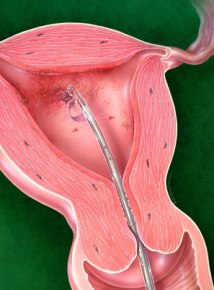What Is Adenomyosis?
Adenomyosis is known as “endometriosis of the uterus”. This is benign condition and it does not cause cancers. Usually this disease affects the posterior side of your uterus.
The endometrial cells enter deep into the myometrium. When this condition occurs, the uterus becomes bigger, usually twice the normal size and becomes very hard. Adenomyosis is diffusive or localized to the specific area.
Who will be affected by adenomyosis?
By only conducting the biopsy of the uterine walls, this condition can be diagnosed with 100% certainty. 8-62% of the women who had hysterectomies can experience this condition. 12% of the women who had adenomyosis also get endometriosis in other areas such as ovaries, pelvic wall and fallopian tubes. Also, this disease can result in infertility. Though adenomyosis causes female infertility, it also occurs in women who already have children.
What are the conditions you need to face when you experience Adenomyosis?
Adenomyosis is not associated with any symptoms. Most commonly a woman with this condition experience the symptoms like heavy, prolonged or excessive bleeding during menstruation and periods with severe pain. Depending on the severity of disease and its levels of penetration into the uterine walls, the amount of cramps and bleeding varies.
How to diagnose adenomyosis?
It is difficult to determine the exact diagnosis for this condition as the other conditions like fibroid tumors and abnormal bleeding result in same symptoms.
Pelvic examination: Pelvic examination can only expose a normal or slightly inflated uterus to a very firm tender uterus which becomes double the normal size.
MRI: At times, this procedure can differentiate Adenomyosis from fibroid lumps. But, for this procedure, you need to consult an experienced physician and radiologist.
Transvaginal ultrasound: This test also cannot give the particular details about the condition.
Tissue diagnosis: This is an accurate method for diagnosing Adenomyosis. If the doctor suspects the diagnosis before, laparoscopy along with a long needle biopsy can be performed. In this method, a long needle is placed into the back of the uterus in order to accumulate a tissue sample. This procedure can also be used when fibroid tumors are removed.
How to control Adenomyosis?
Adenomyosis is due to the excess production of estrogen. Insertion of progesterone in your body can help in treating the condition. For a pregnant woman, the body produces large amounts of natural progesterone thus making Adenomyosis better. After the menopause, your condition will become normal.
The solution for Adenomyosis is to avoid xenoestrogens, which cause the excess production of estrogen.








Treatment for adenomyosis the uterine artery embolization work very well with 85 – 95% symptom improvement. This procedure is simpler the abortion
Dr. Pradeep Muley